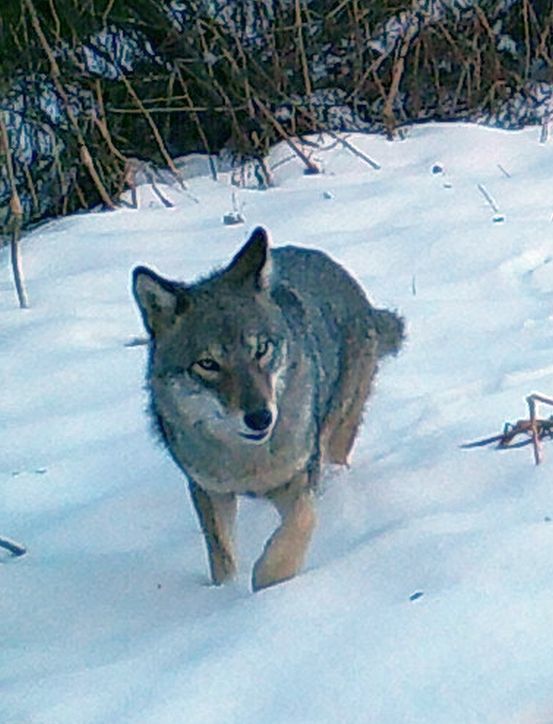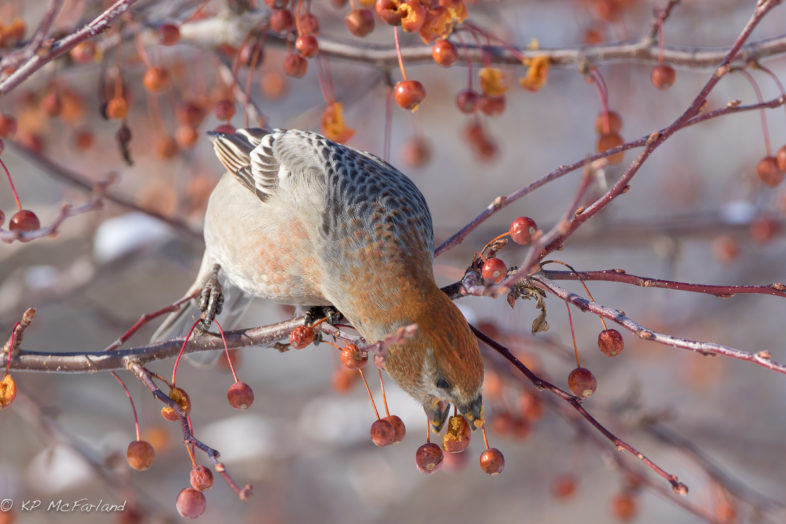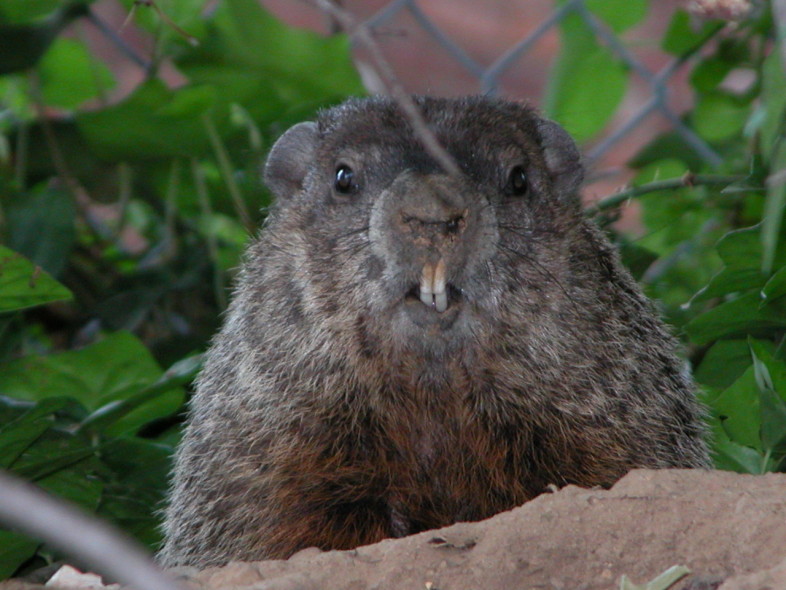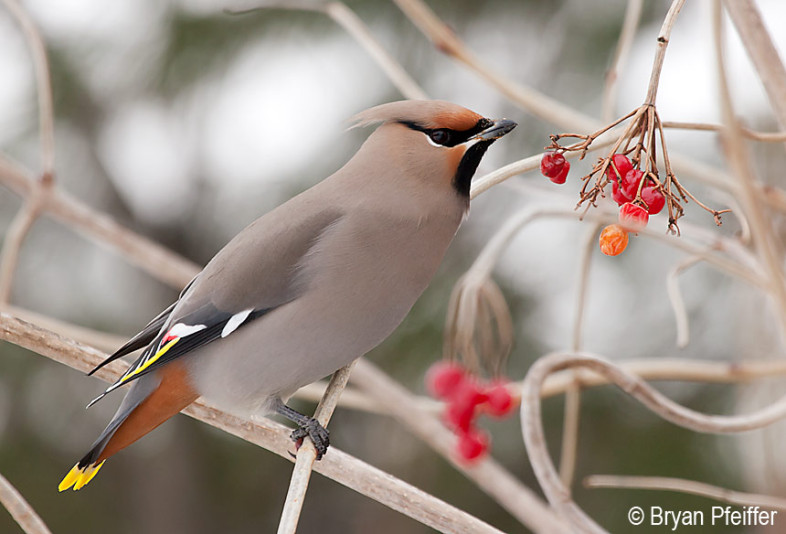This month, wildlife and the rest of us here in New England will cross a threshold – arbitrary yet not insignificant: 10 hours of daylight. You can sense it when you head out in the morning: Black-capped Chickadees, Northern Cardinals, and House Finches are among the birds breaking into song, and Downy and Hairy woodpeckers are starting to drum.Even though we’ve got lots more winter ahead, change is coming. So here’s a Field Guide to February to help get your hopes up, no matter what that groundhog predicted.
Deep Sleep
According to NPR News, to awaken the groundhog for his annual ritual this morning, the Punxsutawney crowd chanted “Phil! Phil! Phil! Phil!”. Afterall, Marmota monax – the groundhog, whistle pig, woodchuck, or whatever you like to call it – is a deep sleeper, a “true” hibernator. Their body temperature drops below 68 degrees F, sometimes as low as 40 F, and their heart rate slows dramatically to just five beats per minute. But this doesn’t stretch on for the entire winter. They go through bouts of torpor that last about a week, then they wake up for a few days, and then back into torpor. They can have up to a couple dozen cycles over the entire hibernation period. Phil is likely headed back to the slow life again after today’s big party. He apparently saw his shadow, forecasting six more weeks of winter.
Cold Weather, Hot Birds
Some of the notable birds seen around Vermont during the past few weeks: Bohemian Waxwings (view live Vermont eBird map) have joined Cedar Waxwings feeding on wild fruit and ornamental trees, even in our cities. We’re also seeing more Snow Bunting flocks whirling across the fields (view live Vermont eBird map) and a few Pine Grosbeaks feeding on crab apples along city streets (view live Vermont eBird map).
Vultures soaring and blackbirds singing? It happens in February, and it is a sure sign of the spring to come. Migratory birds begin to return this month. Although they’re hardly a long-distance migrants, Turkey Vultures are among the first northbound birds we see (view live Vermont eBird map) in northern New England each February. Not far behind are Red-winged Blackbirds (view live Vermont eBird map). Check out the Vermont eBird bar chart for February to find out what might be arriving around you.
We hope you’ll add your sightings to Vermont eBird, a project of the Vermont Atlas of Life.
THE HOWL OF WINTER

Eastern Coyote peering into a game camera. Shared by Declan McCabe. Click image to see the observation on iNaturalist Vermont.
Eastern coyote breeding season peaks now – around the middle of February. The howl of coyotes can usually be heard on winter nights, especially during mating season. They usually begin breeding at two years of age and may mate for life. The gestation period is approximately nine weeks, with an average litter of six pups. The Eastern Coyote is an opportunistic omnivore. It is both a predator and a scavenger, with a widely varied diet. They’ll eat small rodents, plants, fruit, deer, snowshoe hare, cottontail rabbits, insects, birds, and even a woodchuck.
Add your sightings to iNaturalist Vermont and see where others have seen or heard them too.
Coyote? Eastern Coyote? Coy-dog? Coy-wolf? What is this canine? Learn more about its name and natural history from the VPR podcast – A Brave Little State.
Crows Come Home to Roost
With the sun dropping below the hills the chase was on. The crows had gathered by the hundreds behind the store fronts in West Lebanon, New Hampshire. They’d streamed in from all directions, calling loudly on arrival. Some perched in sumac trees and picked at the seeds. Others cried out on our approach. Then, without warning, they were off. The game was afoot!
We followed them as best we could, zig-zagging through traffic and city streets, as they streamed from the pre-roost towards their final destination. With the light fading fast, we found them. Thousands of crows, with more arriving by the second, gathered in the trees and on the ground. Sometime swirling up into the air over our heads in a great cloud of black birds, then settling down again in the trees with a cacophony of calls.
Join us on Outdoor Radio as we track down a huge winter crow roost and talk about why these amazing birds gather in such large flocks. We’ll even talk about why they are sometimes called a murder of crows.



